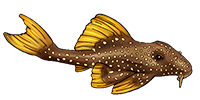Temp 75, pH 7.5, GH 120 ppm, KH 100 ppm, ammonia 0, nitrite 0, nitrate trace, 10G qt tank, no substrate, HOTB AC 50?/200?, bio sponge only and sponge prefilter. New tank, pulled HOTB off a heavily stocked 29G, rinsed media very lightly, plants & everything else has come out of that 29G which also has other BN in it, none of which show ich. The affected fish are not flashing or showing any signs of distress.
I am warming tank slowly, have begun to add salt.
Question is where does Ich originate. I have seen everything written from all fish carry it, to it comes from municipal tap water.
I have not had Ich for decades. Seriously, I rememeber it from when I was a kid but just never had it since. I would think if all fish carry it or it came from tap water at some point one fish would have been stressed enough for an outbreak.
I have read about the life cycle and it doesn't seem like it could come from a municipal water supply treated with chloramine. I'm also struggling with the idea it is always present when I have not had a single case in ages. I am comfortable with the idea that some populations of fish may carry it yet not fully express all the symptoms.
And finally, how fanatically do I need to be about preventing cross contamination? I have multiple tanks and 11 with fish. This of course assumes it didn't come out of the faucet or already exists in all my tanks.
thanks,
Mike





